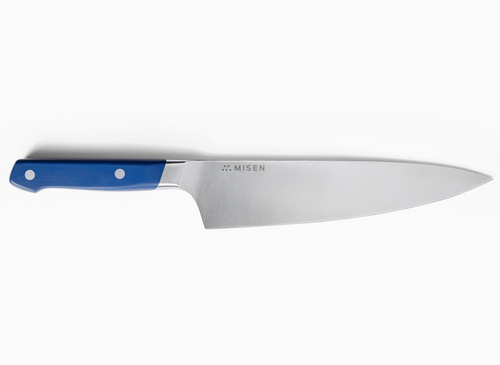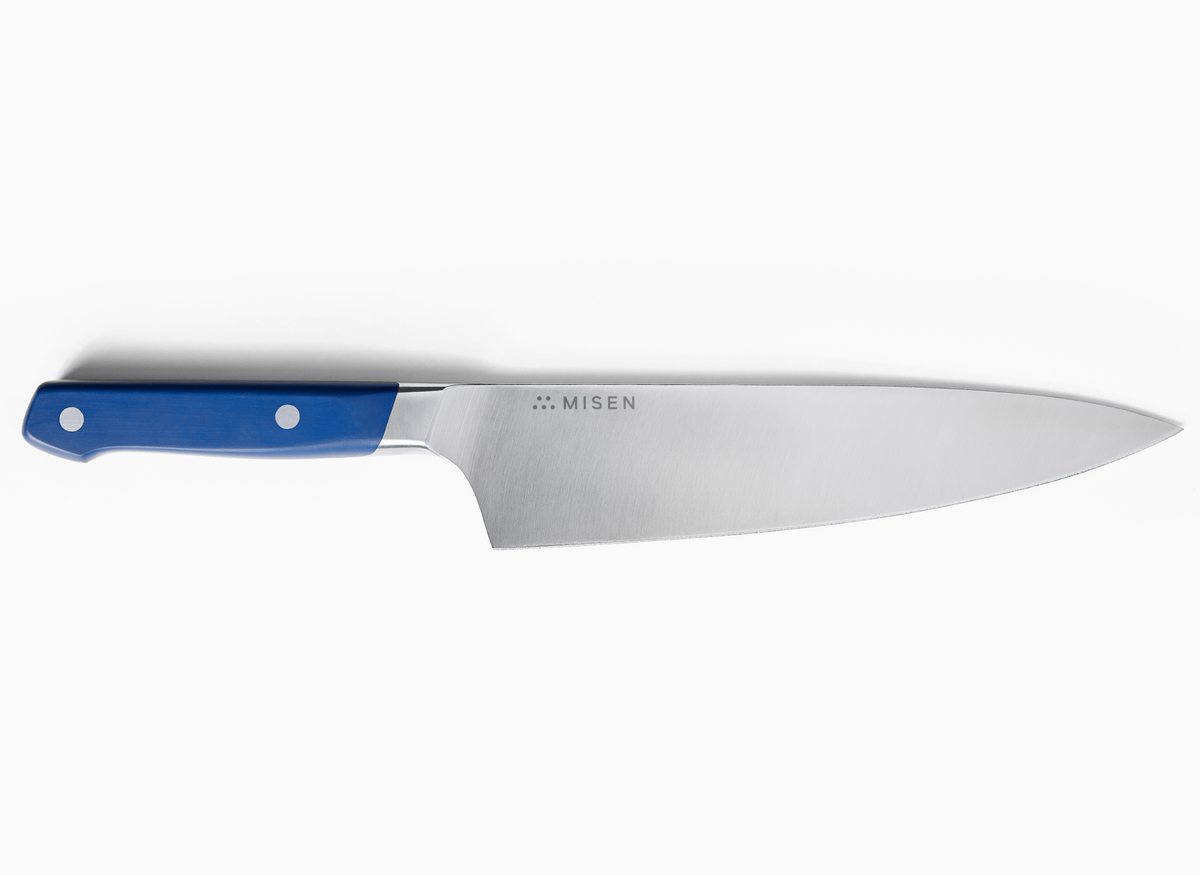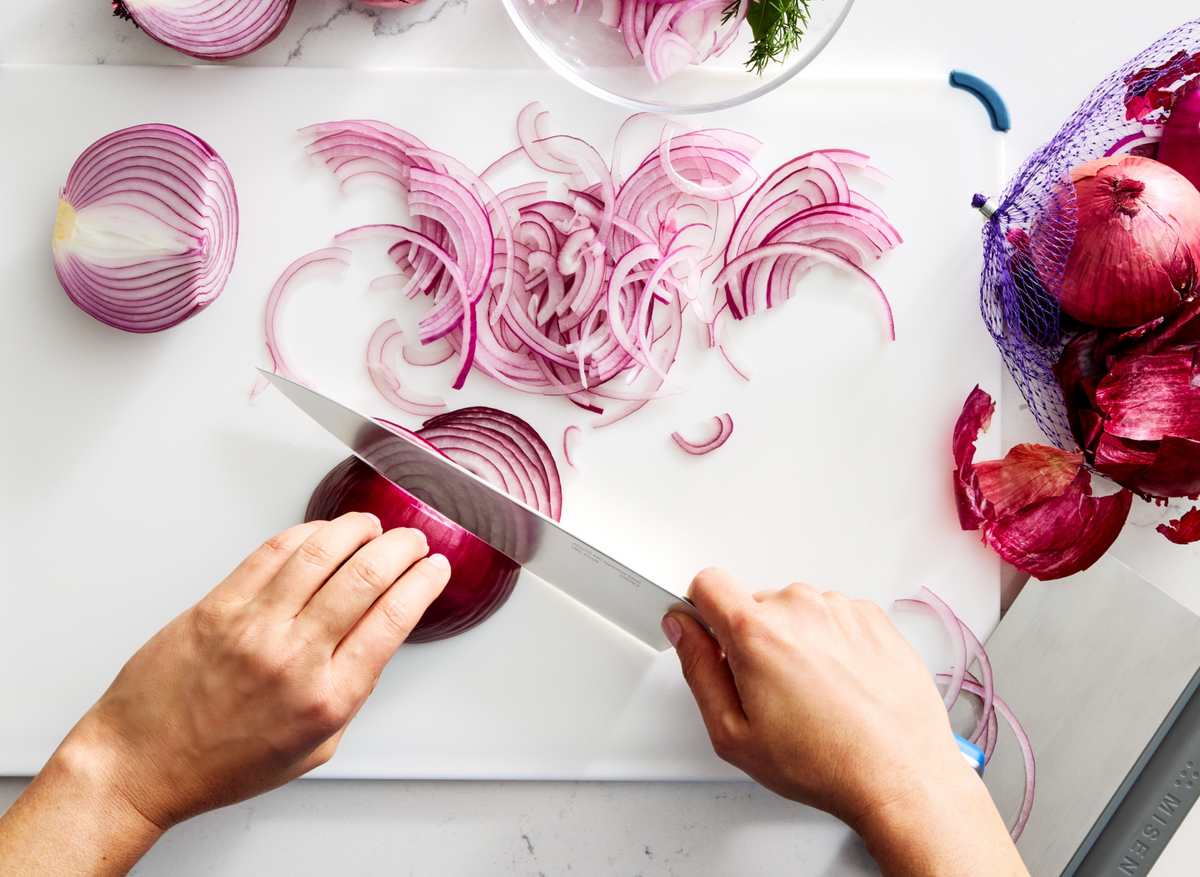The Offset Spatula, a Kitchen Essential

The offset spatula is a versatile kitchen tool designed for precision and control in various culinary tasks. Its unique angled blade allows for smooth spreading, frosting, and handling of delicate foods. This guide explores the features, types, and applications of offset spatulas, highlighting their importance in both professional and home kitchens.
Introduction to the Offset Spatula
Definition and Design Features
The offset spatula stands out among kitchen utensils due to its unique design and versatility. Characterized by a blade with two distinct bends - one near the handle and another at the end - this tool creates an offset angle that allows users to maintain a parallel position between the blade and the work surface[1]. This configuration facilitates even spreading and smooth application of various ingredients.
Typically crafted from stainless steel, the blade's length can vary, with common sizes ranging from 4.5 to 9 inches to cater to different tasks and preferences[1]. The rounded end ensures gentle handling of delicate baked goods, while its flexibility enables it to conform to the contours of baking tins and pans[2].
The ergonomic handle, often made of wood or plastic, provides a comfortable grip and keeps the user's hand at a distance from hot surfaces or delicate creations[2]. This thoughtful design makes the offset spatula an indispensable tool for both professional chefs and home cooking enthusiasts.
Types and Sizes of Offset Spatulas
Offset spatulas come in various sizes to accommodate different tasks in the kitchen. The most common sizes include:
- Mini (4.5-inch blade): Perfect for spreading frosting on cupcakes, cookies, and personal pizzas, as well as maneuvering in tight spaces[3].
- Medium (8-inch blade): Ideal for frosting larger cakes and spreading batter in sheet pans[3].
- Large (9-inch or longer blade): Excellent for creating smooth surfaces on large desserts and transferring multiple items from a tray to a cooling rack[1].
Many bakers prefer to have multiple sizes on hand, as each offers unique advantages. The choice between a small or large offset spatula often depends on personal preference and the specific baking tasks at hand.
Comparison to Other Kitchen Utensils
The offset spatula's angled blade allows for superior control and precision, setting it apart from traditional butter knives and icing spatulas. Unlike turner spatulas designed primarily for flipping and lifting food, offset spatulas excel in delicate tasks such as creating decorative swirls on cakes or gently loosening baked goods from pans[4].
Their thin, flexible blade enables smooth, even spreading and the ability to conform to various pan shapes[5]. This versatility extends beyond baking, as offset spatulas can replace multiple kitchen tools, from spreading condiments on sandwiches to creating artistic presentations in savory dishes.
The Offset Spatula's Versatility in Baking Applications
Frosting and Decorating Cakes
When it comes to frosting and decorating cakes, the offset spatula truly shines. Its unique design allows for unparalleled precision and control, making it the tool of choice for both professional bakers and home enthusiasts. The angled blade enables smooth, even application of buttercream, whipped cream, or other frostings without the user's knuckles dragging through the surface[3].
For more intricate work, such as frosting cupcakes or creating delicate swirls and patterns, the mini offset spatula offers superior maneuverability and precision. The tool's versatility extends to creating perfectly smooth sides on layer cakes or crafting elegant swoops and textures for a more rustic aesthetic[1].
One particularly effective technique involves using the offset spatula to create a series of horizontal lines around the cake, starting from the bottom and working upwards. This method not only produces a visually striking design but also allows for a quick and efficient frosting process, ideal for beginners or those short on time[6].
Spreading Batters and Doughs
The offset spatula's versatility shines when it comes to spreading batters and doughs. Its unique design allows for superior control and precision, making it the ideal tool for evenly distributing cake batter in pans. The angled blade enables bakers to reach tight corners and create a uniform depth, resulting in flat and even cakes[3].
This advantage extends to thicker batters like coffee cakes, pound cakes, and brownies, where the offset spatula's bend prevents knuckles from dragging through the mixture. The tool's flexibility also proves invaluable when working with delicate doughs, such as those used for crêpes.
For more intricate designs, such as marbling two-tone cakes, the offset spatula can be plunged into the batter like a skewer, allowing for swift and decisive turns of the wrist to create beautiful swirls before baking[3]. This level of control and precision is difficult to achieve with traditional utensils, making the offset spatula an indispensable tool for both professional bakers and home enthusiasts looking to elevate their baking game.
Lifting and Transferring Delicate Baked Goods
The offset spatula's thin, flexible blade makes it an indispensable tool for lifting and transferring delicate baked goods. Its unique design allows bakers to gently wedge between muffins or cupcakes and their pan wells, effortlessly popping them out for cooling without damaging the delicate treats[3].
When working with more fragile items like cookies, roasted vegetables, or tofu, the offset spatula's precision and control shine, enabling seamless transfers from baking sheets to serving platters[1]. For intricate tasks such as moving sugar cookie cutouts to baking sheets or lifting delicate cake layers, the offset spatula's long, narrow shape provides unparalleled maneuverability and support.
Beyond Baking: Savory Uses of the Offset Spatula
Handling Delicate Proteins
The offset spatula's versatility extends beyond baking to the delicate handling of proteins in savory cooking. Its thin, flexible blade proves invaluable when working with fragile fish fillets or delicate cuts of meat. The spatula's design allows for precise maneuvering, enabling cooks to gently separate fish skin from flesh or lift tender pieces of poached chicken without tearing.
When preparing dishes like pan-seared scallops or delicate fish, the offset spatula's ability to slide smoothly under the protein minimizes disruption to the carefully cultivated crust. This tool also excels in transferring thinly sliced meats, such as carpaccio or prosciutto, from cutting board to plate without compromising their integrity.
Spreading Sauces and Condiments
The offset spatula's unique design allows for precise and even distribution of various spreads, elevating both sweet and savory dishes. For sandwich enthusiasts, it's a game-changer, enabling the perfect application of mayonnaise, mustard, and other condiments with professional-level precision[7].
When working with sticky or dense spreads like tahini or peanut butter, the offset spatula proves invaluable for reconstituting and portioning out dollops with ease[8]. Its thin, flexible blade also excels at creating picture-perfect avocado toast, allowing users to carve and spread avocado segments with Instagram-worthy precision.
In the realm of sauces, the offset spatula's ability to spread tomato sauce evenly on pizza dough surpasses that of traditional ladles, ensuring a uniform layer and enhancing the overall quality of homemade pizzas[3]. This level of control and precision in spreading sauces and condiments makes the offset spatula an indispensable tool for both professional chefs and home cooks seeking to elevate their culinary creations.
Precision Plating and Food Presentation
The offset spatula's precision extends beyond baking to the realm of culinary artistry, playing a crucial role in food presentation and plating. Its thin, flexible blade allows for intricate designs and precise placement of ingredients, elevating dishes from mere sustenance to visual masterpieces.
The offset spatula's versatility shines in this context, as it can be used to create smooth surfaces, intricate patterns, or even assist in the placement of delicate garnishes. It complements other plating tools by providing a stable surface for transferring and arranging components, ensuring that each element of the dish is placed with intention and care.
This level of precision in plating not only enhances the visual appeal of the dish but also demonstrates the chef's skill and attention to detail, transforming meals into memorable culinary experiences.
Choosing the Right Offset Spatula
Material Considerations: Metal vs. Silicone
When choosing an offset spatula, the material of the blade is a crucial consideration, with metal and silicone being the primary options. Metal offset spatulas, typically made of stainless steel, offer superior precision and control due to their thin, flexible blades. These are ideal for tasks requiring fine detail, such as smoothing cake batters or creating intricate frosting designs.
Silicone offset spatulas, on the other hand, offer the advantage of being heat-resistant and non-scratch, making them suitable for use with non-stick cookware and at higher temperatures. They are also more forgiving when working with delicate surfaces. However, silicone blades tend to be thicker and less precise than their metal counterparts, which may affect their performance in tasks requiring extreme precision.
Some bakers prefer to have both types on hand, using metal for detailed work and silicone for general-purpose tasks or when working with heat-sensitive ingredients.
Blade Length and Flexibility
The blade length and flexibility of an offset spatula significantly impact its functionality and versatility in the kitchen. As discussed earlier, offset spatulas typically come in three main sizes: mini (4.5-inch blade), medium (8-inch blade), and large (9-inch or longer blade).
The flexibility of the blade is another crucial factor, as it allows the spatula to conform to the contours of various baking tins and pans. This adaptability ensures even spreading and smooth application of ingredients, whether working with delicate batters or thick frostings. The blade's flexibility also proves invaluable when lifting delicate baked goods or loosening cakes from their pans without causing damage.
Many professional bakers recommend having multiple sizes on hand to accommodate different tasks, as each offers unique advantages in the kitchen[1][3].
Ergonomic Handle Design
The ergonomic handle design of offset spatulas plays a crucial role in their functionality and user comfort. Many high-quality offset spatulas feature handles made from durable, easy-to-clean materials such as polypropylene. This material choice offers shock resistance and ensures sanitary conditions in the kitchen[9].
Some manufacturers have developed non-slip handles that provide a secure grip, even when hands are wet or greasy. This feature enhances control and precision during delicate tasks like frosting cakes or lifting cookies[10]. The offset design of the spatula keeps the user's hand safely away from food while working, reducing the risk of accidental contact or contamination.
Additionally, the ergonomic shape of the handle allows for comfortable use over extended periods, minimizing hand fatigue during lengthy baking or decorating sessions. These thoughtful design elements contribute to the offset spatula's versatility and ease of use, making it an indispensable tool for both professional bakers and home cooking enthusiasts.
Care and Maintenance of The Offset Spatula
Proper Cleaning Techniques
To maintain the longevity and effectiveness of your offset spatula, proper cleaning techniques are essential. After each use, wash the spatula with warm, soapy water, paying special attention to the blade's crevices where food particles may accumulate. For stubborn residues, gently scrub with a soft sponge or cloth to avoid scratching the surface.
Rinse thoroughly and dry immediately to prevent water spots or potential rusting, especially for metal spatulas. While many offset spatulas are dishwasher-safe, hand washing is recommended to preserve the blade's integrity and handle's finish. For silicone spatulas, ensure they are completely dry before storing to prevent mold growth.
When cleaning offset spatulas used with raw meat or eggs, use hot water and antibacterial soap to eliminate any potential foodborne pathogens.
Storage Recommendations
Proper storage of offset spatulas is crucial for maintaining their functionality and longevity. To prevent damage to the blade, store offset spatulas in a dedicated utensil holder or drawer insert that keeps them separate from other tools. This prevents accidental nicks or bends that could compromise their effectiveness.
For those with limited drawer space, consider hanging offset spatulas on a magnetic strip or utensil rack, ensuring easy access and visibility. When storing multiple sizes together, nest them carefully to maximize space efficiency without risking damage to the smaller blades.
Some bakers prefer to keep their most frequently used offset spatulas within arm's reach on the countertop, facilitating quick access for daily tasks like spreading condiments or frosting cupcakes[3]. Regardless of the chosen storage method, ensure that offset spatulas are completely dry before putting them away to prevent rust or mold growth, particularly in the joint where the blade meets the handle.
Extending the Lifespan of Your Offset Spatula
To extend the lifespan of your offset spatula, proper care and maintenance are essential. Regularly inspect the blade for any signs of wear or damage, particularly at the joint where it meets the handle. If you notice any rust spots, gently remove them with a mixture of baking soda and water, then dry thoroughly.
For wooden handles, occasionally apply food-grade mineral oil to prevent drying and cracking. When using your offset spatula, avoid applying excessive pressure that could bend or warp the blade. Instead, let the tool's design do the work for you, utilizing its flexibility and angled shape for optimal performance[3].
To prevent unnecessary wear, reserve your offset spatula for its intended purposes rather than using it as a makeshift pry bar or scraper. When storing, consider using blade guards or dedicated storage solutions to protect the edge and maintain its shape. By treating your offset spatula with care and using it appropriately, you can ensure it remains a reliable kitchen companion for years to come.
Conclusion
The offset spatula is truly a versatile and indispensable tool for any kitchen, from professional bakeries to home cooking spaces. Its unique design offers unparalleled precision and control, making it essential for tasks ranging from cake decorating to handling delicate proteins. By understanding the various types, applications, and care techniques for offset spatulas, you can significantly enhance your culinary skills and efficiency in the kitchen.
For those looking to elevate their kitchen toolkit, consider adding a high-quality santoku knife to complement your offset spatula. This versatile Japanese-style knife excels in slicing, dicing, and mincing, making it a perfect companion for your culinary adventures.
Ready to upgrade your kitchen essentials? Shop Now and discover our range of premium kitchen tools designed to enhance your cooking experience.
- The offset spatula's unique angled design allows for precise control and even spreading of ingredients.
- Available in various sizes, offset spatulas cater to different tasks from intricate decorating to large-scale baking projects.
- Beyond baking, offset spatulas excel in handling delicate proteins, spreading sauces, and precision plating.
- When choosing an offset spatula, consider the material (metal vs. silicone), blade length, and handle ergonomics.
- Proper care, cleaning, and storage are essential for maintaining the functionality and longevity of your offset spatula.
- https://www.seriouseats.com/what-is-an-offset-spatula-7099792
- https://becauseyoucook.com/blog/from-icing-cakes-to-flipping-pancakes-the-offset-spatula/
- https://www.kingarthurbaking.com/blog/2022/12/09/baking-with-offset-spatula
- https://www.webstaurantstore.com/guide/1062/types-of-spatulas.html?srsltid=AfmBOooRtKw52dpTjwywNzl7yjvsl9HSAAQySu3pC0QYqdMj915DK-sw
- https://www.thekitchn.com/types-of-spatulas-23669466
- https://marykatesvegancakes.com/simple-frosting-technique-using-an-offset-spatula/
- https://food52.com/blog/17437-a-baker-s-go-to-keep-it-in-her-pocket-tool-for-well-everything
- https://www.allrecipes.com/what-is-an-offset-spatula-7551995
- https://www.webstaurantstore.com/ateco-1305-4-1-4-blade-tapered-offset-baking-icing-spatula-with-plastic-handle/1441305.html
- https://www.amazon.com/OXO-Grips-Offset-Icing-Spatula/dp/B00004OCNM








